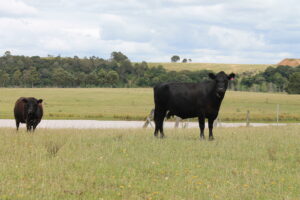Cattle slaughter and production rose in the third quarter, but the female slaughter rate (FSR) has remained stagnant. At 44%, the FSR remains within the generally accepted herd rebuild range of below 47%, and indicates the ongoing wet seasonal conditions for that quarter encouraged producers to continue retaining breeders. These figures, up to the end of September, were released by ABS just last week, and while the widespread flooding on the east coast experienced this quarter is sure to have an impact, that data isn’t yet included.
As mentioned, the FSR hasn’t moved from last quarter, remaining at 44%, which is also the same rate it tracked at for the September 2021 quarter. The FSR has now been trending at 48% or lower for eight consecutive quarters, which surpasses the previous herd rebuild in 2016/17. The last period that maintained rebuild sentiment longer was June 2010 to March 2013, when it tracked at 47% or lower for 11 quarters. If we look at individual states, there has been only marginal movement from the previous quarter, with the east coast states within 2 percentage points of their FSR from the June quarter. WA has lifted 3 percentage points , while Tassie has dropped back 11 percentage points.
Cattle slaughter overall has continued to lift, increasing more than 4% from the previous quarter, to 1.55 million head. It hasn’t returned to year-ago levels, however, sitting 2% below the September 2021 slaughter figure, and 19% less than the five-year-average for the quarter. We can see that slaughter has been slowly catching up to the five-year figure throughout 2022 however, with the March quarter 24% lower, and the June quarter 21%. It was however still the lowest September quarter total cattle slaughter since at least 2007, with even the corresponding quarter in 2016 10% higher.
Actual female slaughter was 30% below the five-year-average in the September quarter, at 227,300 head. It fell more year-on-year than the total cattle slaughter, dropping 4% compared to the three months to September in 2021, but has made more gains on this year’s previous quarters than total slaughter. Total slaughter has got 5% closer to the year-ago levels since March, whereas female slaughter has got 12% closer.
What does it mean?
There were likely a few factors at play keeping the FSR low in the September quarter. Rebuild sentiment is ongoing, as seasonal conditions were then still mainly positive, but the heat coming out of some cattle prices slightly could have also influenced producers to hang onto stock while they had the feed. Anecdotal reports of a long wet winter impacting weight gains could have also seen some lines held on for longer. Processing capacity issues could also be limiting the uptick in total slaughter as the herd gets back to pre-drought numbers. Next quarter will likely be heavily impacted by the impact of current flooding on both producers and the supply chain.
Have any questions or comments?
Key Points
- The female slaughter rate remains steady both year-on-year and on the previous quarter at 44%.
- Total cattle slaughter for the September quarter rose 4% from June, but is still below year-ago levels.
- Rebuild and retention sentiment still present in the September quarter, where next quarter could see paddock and processor access play a bigger role.
Click on figure to expand
Click on figure to expand
Data sources: ABS,
Photo Credit: Kyla Milne














